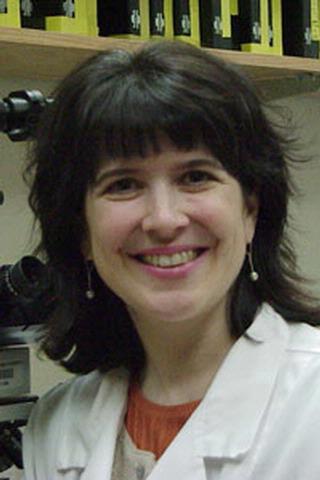Fudge Lab
Anatomy and Neurochemistry of Major Psychiatric Illnesses
A longstanding focus of our laboratory is examining how pathways through the amygdala are positioned to mediate symptomatology of severe mental illnesses. Over the last decade, multiple human neuroimaging studies show that amygdala dysfunction—its structure, function, or both—is a component of many psychiatric syndromes. Broadly speaking, this is not surprising since the amygdala has long been known to code the salience of external experience. However, the amygdala participates in many diverse and specific functions including fear conditioning and extinction, safety signaling, recognition of emotion in facial expression, and affective responses to primary rewards and punishments. Many of these functions have seemingly opposing goals, raising the question of whether discrete or similar amygdala subregions or cell groups participate in recognizing safety versus reward, or fear learning and extinction. Moreover, the amygdala is a highly heterogeneous structure whose various nuclei have significant differences in structure and connectivity among animal species. Ongoing studies in our laboratory use nonhuman primate models to identify how input/output pathway through the amygdala converge and segregate in order to understand how various types of emotional coding might take place in the human. Because many psychiatric symptoms are brought about by stressful life experiences, we work n collaboration with other nonhuman primate groups, to examine the molecular and cellular features of specific amygdala circuits and subcircuits that are especially important in stress responses. Our work is important in helping to design and interpret outcomes of human neuroimaging work, and we also work with several groups studying manifestations of psychiatric disease in humans.
A new area of study in our laboratory involves models of stress in adolescent rats. Since circuit formation in the amygdala is ongoing during childhood and adolescence, we have several studies investigating the roles of stress on typical amygdala development, and correlated behavioral outcomes.
We invite you to visit our research projects page to see specific projects ongoing in the laboratory.
A word to undergraduates…
We are getting back to our pre-COVID routines, including undergraduate rotations! See details.
SfN 2023
 Daulton Myers presents on PFC networks to anterior cingulate hubs
Daulton Myers presents on PFC networks to anterior cingulate hubs
Daulton showed how different afferent cortical networks overlap and segregate in the subgenal and perigenual ACC in monkeys. Take homes so far: 1. sgACC inputs are exquisitely sensitive to injection placement, and 2. despite some similar inputs, there are few collateral inputs to these adjoining sgACC and pgACC areas.
 Dennisha King undercovers microglia changes in the PL amygdala after infant stress
Dennisha King undercovers microglia changes in the PL amygdala after infant stress
The paralaminar nucleus of the amygdala (PL)consists of immature neurons that mature slowly over childhood and adolescence, and likely add to amygdala circuitry. Dennisha shows that infant stress results in unequivocal changes in the maturation of microglia in infant PL —a change that persists into adolescence. Coming next: uncovering transcriptomic changes in the microglia to identify the biologic process and also what it means for synapse formation.
 Congratulations to Iman Mahoui, URMC MD candidate, for winning an Academic Year Out fellowship!
Congratulations to Iman Mahoui, URMC MD candidate, for winning an Academic Year Out fellowship!
Iman will be joining our lab to study how specific groups of DA neurons connect to the amygdala, and whether these cells are influenced by the stress peptide, CRF. We look forward to welcoming her formally this summer and moving forward on this exciting project!
 NeURocity Scholar Chisom Ibe
NeURocity Scholar Chisom Ibe
Summer’s end and a wonderful presentation by Chisom Ibe (right), NeURocity Summer Scholar, on microglia responses to early life stress in macaque amygdala! Co-mentored by grad student Dennisha King (left) every step of the way.
 IDDRC Symposium at the URMC Memorial Art Gallery
IDDRC Symposium at the URMC Memorial Art Gallery
It's a wrap! Great days of outside speakers and local trainee talks, one by our own Dennisha King!
Left to right: Iman Mahoui, Dr. Emily Kelly, Dennisha King, Dr. Julie Fudge

Julie Fudge, M.D.
Principal Investigator
Projects
View All ProjectsPublications
- Microglia morphology in the developing primate amygdala and effects of early life stress.; eNeuro. 2025 Jan 03.
- Translational Insights From Cell Type Variation Across Amygdala Subnuclei in Rhesus Monkeys and Humans.; The American journal of psychiatry. 2024 Oct 30.
- Microglia morphology in the developing primate amygdala and effects of early life stress.; bioRxiv : the preprint server for biology. 2024 Aug 15.
- Amygdalo-nigral inputs target dopaminergic and GABAergic neurons in the primate: a view from dendrites and soma.; bioRxiv : the preprint server for biology. 2024 Jan 16.
Affiliations
News
November 17, 2023
Daulton Myers presents on PFC networks to anterior cingulate hubs
November 17, 2023
Dennisha King undercovers microglia changes in the PL amygdala after infant stress
June 22, 2023
Welcome Chisom Ibe from CUNY
June 22, 2023
Well-done at UAB, Dennisha King
Contact Us
Fudge Lab,
601 Elmwood Ave,
Rochester, NY 14642






